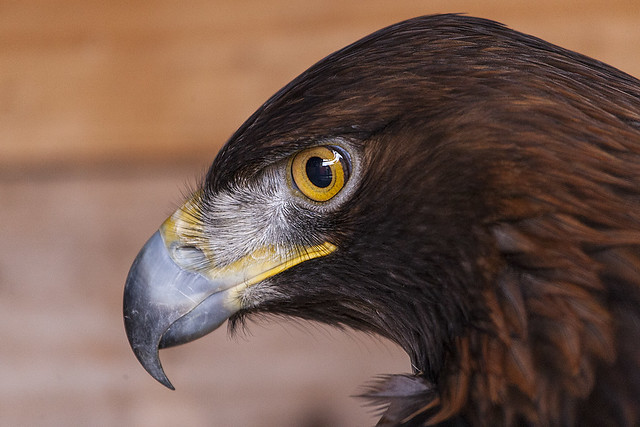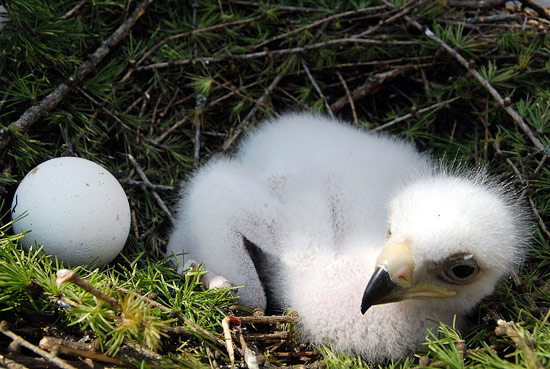National Symbols: National Bird
Golden Eagle (common name)
Aquila chrysaetos (scientific name)
Designation
Official
Classification
- Kingdom: Animalia
- Phylum: Chordata
- Class: Aves
- Order: Accipitriformes
- Family: Accipitridae
- Genus: Aquila
- Species: A. chrysaetos
The Bird
A large raptor, the golden eagle is generally 66–100 centimeters (26–39 inches) long with a typical wingspan of 1.8–2.34 meters (5.9–7.7 feet). Its dark brown plumage is complemented by a golden-brown crown and neck, giving the bird its name. The eagle's upper wings are a lighter, mottled brown with white-banded under feathers, and its tail displays white bands as well. These birds have huge, yellow talons, which they use as effective hunting tools. Golden eagles prefer locations containing both wood and meadow habitats abundant with game. Formidable hunters, this species eats a variety of animals, such as squirrels, raccoons, rabbits, lizards, and snakes, and even larger mammals such as mountain goats, young dear, wild and domestic cats, foxes, and wolves. Highly regarded for its keen sense of sight and smell, the bird is also extremely fast, reaching dive speeds of more than 240 kilometers per hour (150 miles per hour).
Golden eagles are monogamous, often mating for life. Both males and females perform a courtship ritual of swooping and diving flights. Highly territorial, golden eagles aggressively defend their nests and are extremely sensitive to humans, therefore preferring to breed in remote sites. The birds build a network of large nests within their territory and rotate through the different structures over the years. The female generally lays two eggs a few days apart, and in most cases the older chick survives, with the younger dying before leaving the nest.
The Significance
The golden eagle, known in Spanish as the águila real, or "royal eagle," is Mexico’s national emblem. This magnificent bird is the central feature of Mexico's national flag, where it is depicted on a cactus carrying a snake in its mouth and symbolizing the triumph of good over evil. In 1968, Mexican President Ordaz ordered the modification of the eagle’s appearance to look more aggressive. The resulting redesign by painter Francisco Helguera is still in use today, and Mexican laws closely regulate portrayals of the great bird.
Since ancient times, the eagle has been synonymous with courage and power because of its enormous size, strength, grace, and remote mountain habitat. The eagle also represented the Aztec sun god Huitzilopochtli (the Aztecs referred to themselves as the "People of the Sun"). A common imperial military symbol, the eagle has been used by the empires of Rome, France, Germany, Russia, and Austro-Hungary.
Golden eagles have only one natural predator, humans, who are responsible for half of the species' deaths from poisoning, wind turbines, and hunting. However, because of its large range, the golden eagle is classified as being of "least concern" on the IUCN Red List.
Article written for World Trade Press by WTP Staff.
Copyright © 1993—2024 World Trade Press. All rights reserved.

 Mexico
Mexico 
